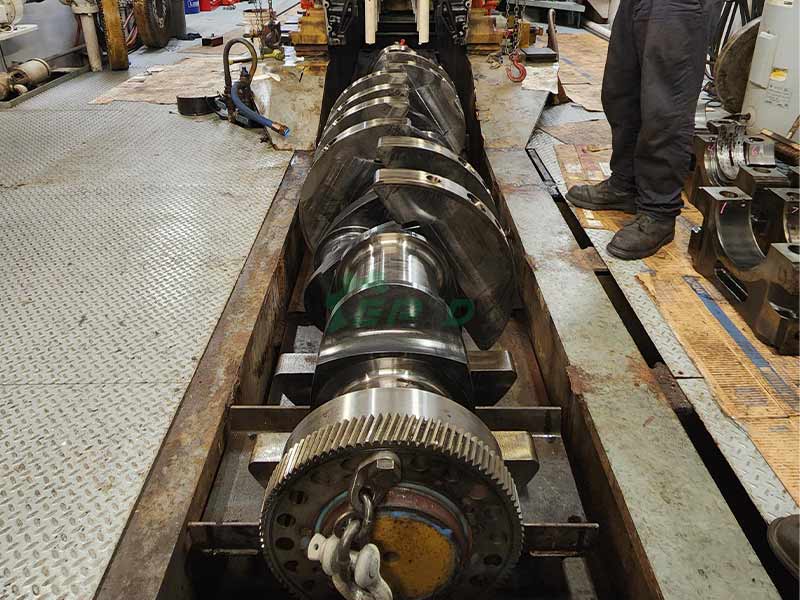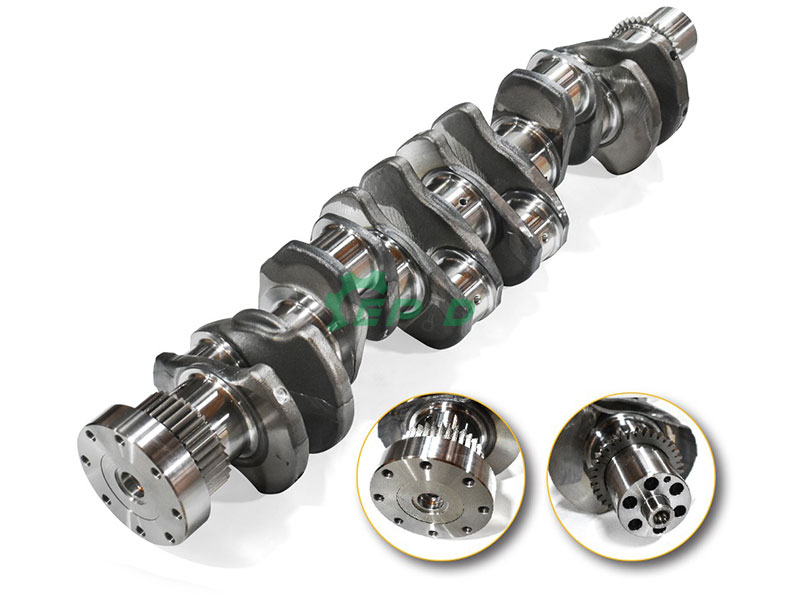Caterpillar crankshafts are critical components in heavy machinery and engines, designed to withstand extreme conditions and deliver reliable performance. However, improper maintenance practices can lead to premature wear, costly repairs, and unexpected downtime.
The Truth: Many operators assume that diesel engine crankshafts are “set-and-forget” components. However, regular inspections are essential to detect early signs of wear, cracks, or misalignment.
Best Practices:
Schedule routine inspections during engine overhauls or major service intervals.
Use non-destructive testing (NDT) methods like magnetic particle inspection to identify surface cracks.
Check for signs of abnormal wear, such as scoring or discoloration on the journal surfaces.

The Truth: Using the wrong lubricant or failing to maintain proper oil levels can lead to increased friction, overheating, and accelerated wear.
Best Practices:
Always use the lubricant recommended by Caterpillar for your specific engine model.
Monitor oil levels and top up as needed to ensure adequate lubrication.
Replace engine oil and filters at recommended intervals to prevent contamination.
The Truth: While manufacturing defects can occur, most crankshaft failures result from improper installation, poor maintenance, or operating conditions.
Best Practices:
Ensure proper installation by following Caterpillar’s torque specifications and alignment guidelines.
Avoid overloading or operating equipment beyond its rated capacity.
Address engine issues like misfires or excessive vibrations promptly, as they can strain the crankshaft.
The Truth: Neglecting to balance the original diesel crankshaft after repairs or component replacement can lead to vibrations, reduced engine efficiency, and premature failure.
Best Practices:
Always balance the truck engine crankshaft when replacing connecting rods, pistons, or other rotating components.
Use precision balancing equipment to ensure smooth operation.
Consult a certified technician for complex repairs or modifications.

The Truth: While Caterpillar crankshafts are built for durability, they are not immune to wear and tear. Proactive maintenance is key to extending their lifespan.
Best Practices:
Follow Caterpillar’s recommended maintenance schedule for your engine model.
Keep the engine clean and free of debris to prevent contamination.
Monitor engine performance and address issues like unusual noises or vibrations immediately.
Misconception 6: Aftermarket Crankshafts Are Inferior to OEM Parts
The Truth: High-quality aftermarket crankshafts, like those supplied by EPID, can match or exceed OEM performance when sourced from reputable manufacturers.
Best Practices:
Choose aftermarket crankshafts from trusted suppliers with a proven track record.
Verify that the crankshaft meets or exceeds Caterpillar’s specifications.
Look for certifications like ISO 9001 to ensure quality and reliability.
Proper maintenance is essential to maximize the performance and lifespan of Caterpillar crankshafts. By avoiding these common misconceptions and adopting best practices, you can reduce downtime, lower repair costs, and keep your equipment running at peak efficiency.
Whether you’re operating a fleet of Cat 3406E-powered trucks or relying on C15 engines for heavy construction, proactive care of your crankshafts will pay dividends in the long run. For high-quality replacement crankshafts and expert advice, trust EPID to deliver solutions tailored to your needs.